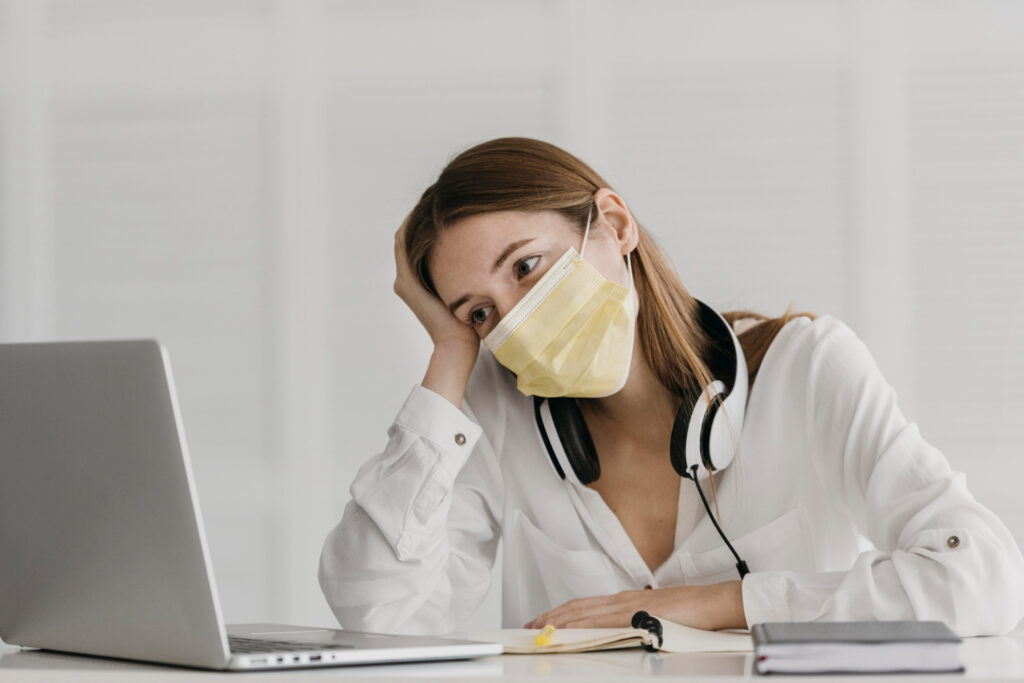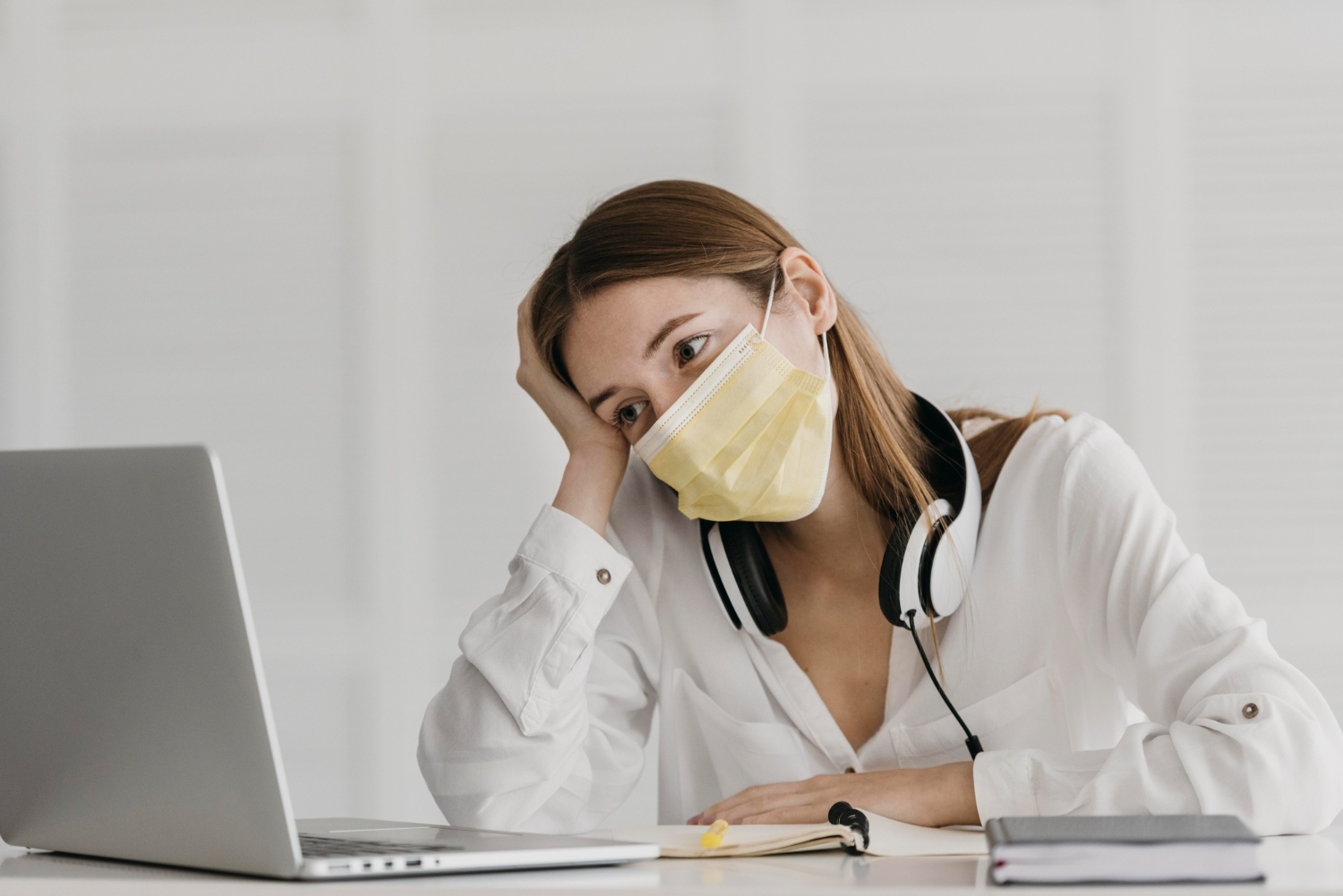Healthcare professionals today face intense psychological pressures unlike any before. Studies show that about 25% of healthcare workers experience clinical anxiety symptoms, with frontline staff reporting rates as high as 43%.
While “stress” and “anxiety” are often used interchangeably, it’s important to understand their key differences.
Stress usually arises from clear, external pressures like heavy workloads or emergency situations and tends to ease once the challenge passes. Anxiety, however, is often more persistent, sometimes developing into a chronic condition that stays even when external pressures are reduced or absent.
This article breaks down these terms, explores their prevalence in healthcare, examines how they affect well-being and performance, and highlights practical strategies for managing both. We also examine the unique impact of the COVID-19 pandemic on healthcare workers’ mental health.
What Are Stress and Anxiety? Key Differences for Healthcare Workers

Stress: A Response to External Pressure
Stress is a natural emotional reaction triggered by specific demands or challenges. In healthcare, these triggers include:
- High patient loads
- Emergency care scenarios
- Long shifts or unpredictable schedules
- Administrative and documentation tasks
Physiologically, stress activates the “fight or flight” response — increasing heart rate, muscle tension, and alertness. These reactions can be helpful in acute situations, sharpening focus and enabling rapid decision-making during critical care.
Also read: Top Stressors Among Healthcare Workers
Anxiety: Persistent Worry Beyond the Stressor
Anxiety tends to last longer and is not always linked to an apparent external cause. For healthcare professionals, it might look like:
- Constant worry about patient outcomes
- Fear of making mistakes
- Generalized feelings of unease even during routine tasks
Besides similar physical symptoms as stress, anxiety often includes psychological effects such as rumination, catastrophic thinking, and avoidance behaviors, which can interfere with job performance and well-being.
How Common Are Stress and Anxiety Among Healthcare Professionals?
Research consistently shows high levels of anxiety and stress across healthcare roles:
- Around 25% of healthcare workers show signs of anxiety overall.
- Nurses report anxiety rates near 27%, reflecting their intense patient contact.
- Physicians report slightly lower rates at about 17%.
- Frontline workers face the highest anxiety levels, with rates up to 43%.
The COVID-19 pandemic amplified these numbers dramatically, with some studies reporting anxiety rates exceeding 50% in frontline staff during peak periods.
Stress and anxiety vary by role, with emergency and ICU personnel often experiencing the most tremendous psychological strain.
What Causes Stress and Anxiety in Healthcare Settings?

Workplace Environment Factors
Healthcare jobs come with multiple inherent stressors:
- Long, unpredictable work hours and shift changes
- Physical demands such as patient handling and prolonged standing
- Exposure to infectious diseases and hazardous materials
- High-stakes decision-making under pressure
The pandemic underscored these risks, increasing workload and anxiety about personal safety.
Emotional and Psychological Burdens
Healthcare workers also face intense emotional challenges:
- Regular exposure to suffering, death, and moral dilemmas
- Compassion fatigue and vicarious trauma
- Complex interactions with patients and families under stressful conditions
- Administrative burdens and reduced control over schedules and decision-making
These factors often combine to intensify feelings of stress and anxiety.
Also read: Stress vs. Strain in Healthcare Workers
The Link Between Stress, Anxiety, and Burnout in Healthcare
Research highlights a close relationship between these conditions:
- Prolonged stress can lead to persistent anxiety.
- Anxiety can reduce resilience, making workers more vulnerable to burnout.
- Burnout manifests as emotional exhaustion, reduced job satisfaction, and impaired performance.
Healthcare workers experiencing anxiety and burnout are at greater risk for mistakes, occupational injuries, and decreased empathy — all of which affect patient care quality and team dynamics.
The COVID-19 Pandemic: A Case Study in Healthcare Worker Mental Health

The COVID-19 pandemic created intense stress for healthcare workers, worsening existing issues and introducing new challenges.
Key problems included:
- Resource Shortages: A significant lack of personal protective equipment (PPE) led to heightened anxiety about personal safety.
- Increased Workload: Healthcare workers faced overwhelming workloads due to staffing shortages, making their working conditions unsustainable.
Additionally, the emotional toll was severe. Many workers witnessed unprecedented patient suffering and death, often without family members present. This created moral distress as they tried to provide compassionate care while adhering to strict infection control measures.
Outside of work, many experienced social isolation, fearing they might infect their loved ones, which cut them off from crucial support systems.
Long-Term Mental Health Effects
Research shows that many healthcare workers developed symptoms similar to post-traumatic stress disorder (PTSD) due to their experiences during the pandemic. Those who contracted COVID-19 also reported ongoing physical and cognitive issues, adding to their psychological distress.
Several studies have noted significant increases in anxiety levels among healthcare workers during the peak of the pandemic, particularly among those on the front lines. Alarmingly, these elevated anxiety levels have persisted long after the immediate crisis, indicating that such healthcare emergencies can be long-lasting.
Effective Strategies to Manage Stress and Anxiety in Healthcare
Individual Approaches
- Mindfulness-Based Stress Reduction (MBSR) programs have proven effective in reducing anxiety and burnout symptoms by promoting present-moment awareness and emotional regulation.
- Peer support groups, like Balint groups, help healthcare workers process challenging experiences and reduce isolation.
- Healthy lifestyle habits include regular exercise, sleep hygiene, and nutrition support.
Organizational Solutions
- Reasonable scheduling and protected time off to support work-life balance.
- Adequate staffing ratios to distribute workload fairly.
- Employing healthcare apps for communication and collaboration, like HosTalky.
- Creating open, stigma-free cultures around mental health that encourage help-seeking without fear of judgment.
- Confidential counseling and employee assistance programs tailored to healthcare professionals.
Conclusion
Recognizing the differences between stress and anxiety is crucial for early intervention and targeted support. The COVID-19 pandemic exposed and intensified these challenges, reinforcing the urgent need for comprehensive mental health strategies that combine individual coping tools with organizational reforms.
Healthcare systems should safeguard their most valuable asset — the professionals who provide daily, compassionate, life-saving care.
Connect with fellow healthcare professionals and access the latest insights. Follow us on LinkedIn!

Been playing around on jilislotgame. Honestly, it’s a fun way to kill time. Graphics are decent, and there’s a good variety of slots. Could be my new go-to! Give it a try: jilislotgame
Aliwin789game1 has a pretty solid variety of games. Seems legit and I haven’t had any issues so far. Might be worth checking out if you are bored. Here is a fast way to check: aliwin789game1